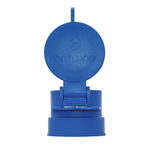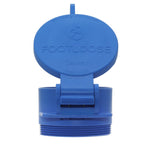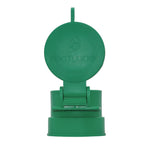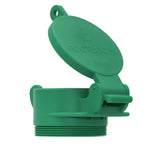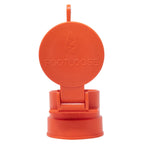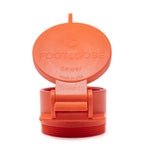You have no items in your shopping cart.
Nothing is more disappointing than cutting a trip short because you need Wi-Fi connectivity.
Maybe there is an emergency that demands your immediate attention. Maybe you simply wish you could truly work from anywhere instead of jumping between coffee shops and RV parks. In either case, having to move your home-on-wheels just for the sake of Wi-Fi is a serious setback for any traveler.
Unfortunately, selecting a solid internet provider for your RV isn’t as simple as getting Wi-Fi in your home or office. Your local telecom providers typically offer internet, cable, and telephone services that won’t follow you wherever you go. Your RV needs something else entirely.
How to Get Wi-Fi in an RV
If you are one of the many people asking, “Can you put Wi-Fi in an RV,” the answer is yes. When it comes to setting up mobile Wi-Fi, RV owners have two broad connection types to choose from:
- Cellular Network Connections
This is the same internet connectivity that most mobile devices use. You can create a Wi-Fi hotspot from your phone or buy a special mobile hotspot device for the purpose.
Any hotspot-capable smartphone can do the job, but they have limited range and will burn through your phone battery quickly. Most telecom providers offer pay-as-you-go plans as well as monthly subscription plans. The main downside is that you can only connect in areas where your cell phone provider has coverage – which can leave remote areas out of reach.
Mobile hotspots are affordable and easy to use. Most hotspot devices work with SIM cards, so you can use any cellular network provider’s data plan and keep your phone separate. However, it’s yet another thing you have to purchase and keep track of.
2. Satellite Network Connections
Satellite internet offers far better coverage than even the best cellular providers. However, satellite options are considerably more expensive. First, you’ll need the appropriate hardware to make the connection. At the bare minimum, you’ll either need a satellite dish or a router-style receiver box, which can cost anywhere from $300 to $5,000. The monthly satellite network subscription will also cost at least a few hundred dollars per month.
Improving satellite connectivity often requires investing in a larger dish. You may also need to calibrate and position the dish before connecting. One of the main drawbacks here is that you cannot reliably use a satellite connection while moving.

Choosing the Best RV Wi-Fi Option for Your Needs
Before picking a Wi-Fi plan for your RV, you should figure out how much data you’ll need on a monthly basis. Regular web browsing and email tasks generally take up about 60 MB an hour, while high-quality Netflix streaming can demand 1 GB per hour. Video content of any kind – including FaceTime and Skype calls – will be the most expensive data you consume.
Since satellite connection requires expensive hardware and a subscription to a specialized provider, most RV owners are going to tend towards cellular options. Casual weekenders and even dedicated, months-at-a-time vacationers will enjoy the flexibility that cellular internet offers. If you live in your vehicle year-round and travel constantly, however, satellite internet may end up being the best option.
Cellular internet users can create a Wi-Fi network in their RVs using their existing mobile provider. All iOS and Android phones have mobile hotspot capabilities. These connections eat up battery life quickly and are limited in terms of speed and range, but they require no additional hardware. If you have a mobile data plan, you can use it to connect anywhere your phone has service.
How to Activate Your Mobile Hotspot on iOS
iPhone users can turn their device into a mobile Wi-Fi hotspot with a few simple taps. Go to Settings and open Personal Hotspot. Set a password and toggle the hotspot on to instantly begin broadcasting your connection.
How to Activate Your Mobile Hotspot on Android
Android devices can also broadcast their mobile connection for other devices. Open the Settings app, tap on Network & Internet, and select Hotspot & Tethering. Tap on Wi-Fi Hotspot and toggle the feature on. You may also change the network name, set a password, and configure a few other options as needed.
The Best Wi-Fi for RVers: Choose the Right Telecom Provider
Whether you use your phone or buy a mobile hotspot router, choosing the right telecom provider is the one thing that will impact your mobile connectivity options the most. If your provider doesn’t offer coverage in the area you’re traveling through, it doesn’t matter how much money you spend – your connection simply won’t work.
Telecom providers are constantly changing, updating, and acquiring coverage throughout the United States and abroad. The GSMA maintains a comprehensive map of every network provider’s coverage area and updates it frequently.
But coverage isn’t the only thing to keep in mind when choosing a mobile hotspot provider. If more than one provider offers coverage in the area you plan on traveling to, you will need to compare their connection speeds, service options, and prices. We’ve gathered information on the five biggest providers below:
- Verizon. Verizon has the best network coverage in the United States. The company’s prepaid Jetpack plan is not the cheapest, but if coverage reliability is your number one concern, there is no better option.
- AT&T. With coverage just under Verizon’s, AT&T is also a top competitor for RV owners looking for camping Wi-Fi solutions. AT&T users will have to opt for one of its more expensive plans, as the company prohibits mobile tethering on its basic Unlimited & More plan.
- T-Mobile. Until recently, T-Mobile was a bottom-tier pick for RV owners due to inferior coverage and speed. However, the company’s focus on 600 MHz Extended Range technology is changing that rapidly. As of August 2020, it is the only provider offering unrestricted internet on this particular long-range spectrum, designed specifically for use in remote and rural areas.
- Sprint. As of April 2020, Sprint is a T-Mobile subsidiary, and the two companies will be combining their networks over the next six years. For now, Sprint offers special low-cost unlimited data plans to members of certain non-profits and educational and healthcare institutions. It also has very affordable postpaid plans. Even its unlimited data plan is markedly lower in price than the top competitors, making it a go-to choice for people who are looking for cost-friendly mobile RV Wi-Fi solutions.
- Cricket. A wholly-owned subsidiary of AT&T, Cricket specializes in data plans designed for mobile hotspots and data-only devices. This can make it an attractive option for RV owners who don’t want to pay extra for a telephone service plan on top of their mobile data plan. You could get the best Gigabyte-per-dollar value from one of these plans if you don’t need additional telephone service.
Improve Your Wi-Fi RV Experience with Signal Boosters
RV owners who opt for mobile data hotspot connections can increase their devices’ range and connection strength with signal boosters. Signal boosters simply take your existing cell phone signal and amplify it. The stronger signal bounces off of more cell towers, leading to far better overall connectivity.
The most basic signal booster costs just over $25, while professional networking equipment can reach up into the thousands. Most camping and RV Wi-Fi solutions cost between $100 and $300 and can be enormously helpful when you’re trying to connect from the far edges of civilization.



